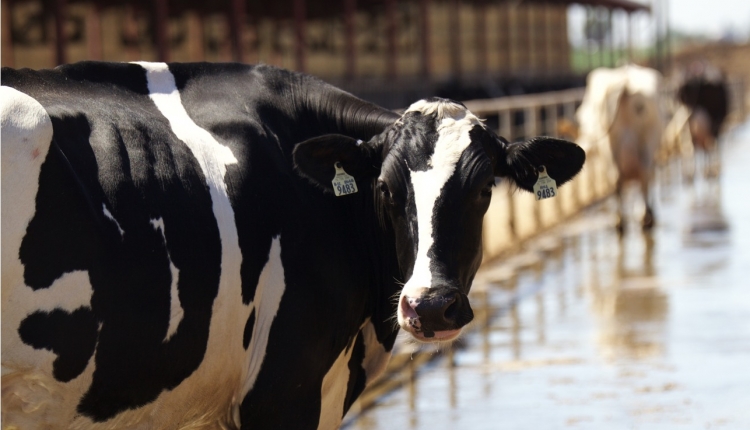The author, from Orefield, Pa., is a veterinarian with a master of business administration degree (MBA). He is a business development manager with Cargill Animal Nutrition Consulting Services. 
During the past week, several producers have approached me with information regarding potential feed ingredients to use as an alternative to corn. That is no surprise with corn prices soaring. Unfortunately, the amount of information was rather limited. We knew the price of the alternatives and had very brief analysis of nutritional content of the product.
Certainly, every dairyman needs to always be looking for ways to lower costs. And, since feed is the largest cost on any dairy farm, that should get the most scrutiny. Corn has traditionally made up a significant part of most dairy feeds because it has been a low-cost source of starch and energy. We must keep in mind that, while cows need starch and energy, it doesn't need to come from corn.
Other cereal grains, such as barley or wheat, can partially replace corn. However, their price tends to follow the price of corn. In addition, they do not have the levels of starch and energy as corn. The other possible substitutes are bakery or candy waste material or liquid materials that are usually high in sugar.
Grain by-products, such as distillers, soy hulls, wheat mids, or brewer's grains, can also partially substitute for corn but are much lower in starch while higher in protein. Distillers and brewer's grains also have significantly higher fat content which may interfere with rumen microbes. These by-products tend to be high in phosphorus which can cause problems with nutrient management plans. Finally, mycotoxins may be concentrated into the by-product after the primary product is removed from the grain.
Rank your options
Of course, one other avenue to cut grain costs is to simply feed less grain. This is a slippery slope. If we cut a pound of corn and lose even a single pound of milk, we lost money, even at $8 corn. We certainly do not want to feed more grain than needed, but cutting it simply because it is expensive does not make sense either.
We must move on from the paradigm of balancing rations, primarily with corn and soybean meal. Savings of 50 cents per cow per day or more may be possible. Talk to your nutritionist and to other producers, but be prepared to do your homework.

During the past week, several producers have approached me with information regarding potential feed ingredients to use as an alternative to corn. That is no surprise with corn prices soaring. Unfortunately, the amount of information was rather limited. We knew the price of the alternatives and had very brief analysis of nutritional content of the product.
Certainly, every dairyman needs to always be looking for ways to lower costs. And, since feed is the largest cost on any dairy farm, that should get the most scrutiny. Corn has traditionally made up a significant part of most dairy feeds because it has been a low-cost source of starch and energy. We must keep in mind that, while cows need starch and energy, it doesn't need to come from corn.
Other cereal grains, such as barley or wheat, can partially replace corn. However, their price tends to follow the price of corn. In addition, they do not have the levels of starch and energy as corn. The other possible substitutes are bakery or candy waste material or liquid materials that are usually high in sugar.
Grain by-products, such as distillers, soy hulls, wheat mids, or brewer's grains, can also partially substitute for corn but are much lower in starch while higher in protein. Distillers and brewer's grains also have significantly higher fat content which may interfere with rumen microbes. These by-products tend to be high in phosphorus which can cause problems with nutrient management plans. Finally, mycotoxins may be concentrated into the by-product after the primary product is removed from the grain.
Rank your options
- When corn prices soar, the price of alternatives will rise, as well. You are going to pay more for feed. However, there may be ways to partially offset the high prices.
- Know the nutritional content of the products. This may require you to pay for testing. Try to find out if the source will be consistent, or will every load have to be tested?
- Work with a nutritionist who is familiar with by-products. That nutritionist should use a ration-balancing program that can evaluate by-products in relation to their nutrient content and in relationship to your homegrown forages.
- Limit the amount of any new feed ingredient to a few pounds until you can assess the effect it is having on production, components, and health.
Of course, one other avenue to cut grain costs is to simply feed less grain. This is a slippery slope. If we cut a pound of corn and lose even a single pound of milk, we lost money, even at $8 corn. We certainly do not want to feed more grain than needed, but cutting it simply because it is expensive does not make sense either.
We must move on from the paradigm of balancing rations, primarily with corn and soybean meal. Savings of 50 cents per cow per day or more may be possible. Talk to your nutritionist and to other producers, but be prepared to do your homework.








